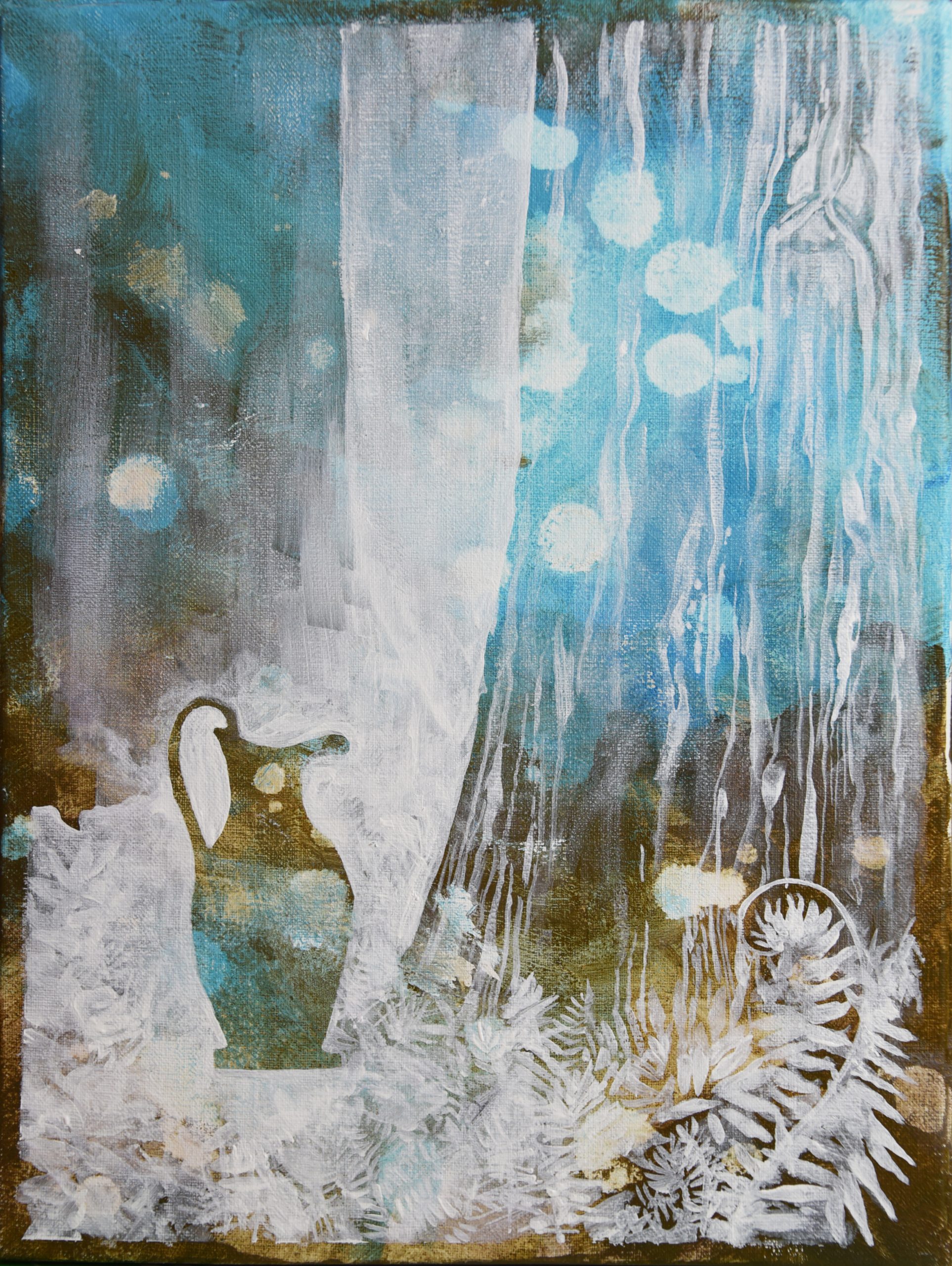Into the Light
Lesson Eight

Lesson Eight: God Laments
Focus Scripture: Hosea 11:1–9, Luke 19:41–44 (Matt. 23:37–39; Lk. 13:34–35
The Wholeness of God
The illustration for Lesson Eight features giant trees modeled on the giant Redwood trees of California. When I painted these trees I didn’t try to be botanically correct, so take the illustration for what it is rather than what it isn’t. As I thought about the content of the lesson, I wanted something, preferably from the natural world, that symbolized God to me.
My Dad worked in the lumber/forestry/forest products industry and I have a long association with trees. Though Dad mostly worked in longleaf pine ecosystems, he did collaborate on projects with companies in the Pacific Northwest. One summer, in the 1970s, we took off for the West Coast on a marathon three-week family vacation. We planned to visit friends and see some of the places he had seen on his work trips to Oregon and Washington. The redwoods and sequoias were on our list of things to see.
Both species (they are cousins, but not the same) grow hundreds of feet tall. Their trunks can be more than a hundred feet around. Their estimated weight is hundreds of tons, and they can live hundreds, even thousands, of years. Thousands of years. The Redwood Genome Project has determined that the redwood genome is nine times larger than the human genome: humans have 3 billion base pairs of DNA; the coast redwood has almost 28 billion. They are remarkable life forms. Standing strong and tall, and seemingly invincible, they are stalwart, dependable, tenacious, and vigorous. I decided these magnificent trees would be a good symbol for God who, the Westminster Shorter Catechism reminds us, is infinite, eternal, and unchangeable, in being, wisdom, power, holiness, justice, goodness, and truth. (Q.4)
I think that’s how we tend to see God: standing alone, upright, strong, invulnerable to the world that looks so small in comparison. And God is those things. But God is not only those things. God is also the parent who can’t bear to give up a child, even if the child causes God pain (Hosea 11:1–9). God is Jesus who wishes that Jerusalem could have seen who he was and avoided what was to come (Luke 19:41–44, Matthew 23:37–39, Luke 13:34–35).
The source of God’s lament in each of these situations is humanity. A quick look at Hosea 11:1–9 reveals most of the elements of lament, though with some adjustments. There is an address to the one who can help: How can I give you up, Ephraim? How can I hand you over, O Israel? (v. 8). There is a description of the situation that has caused lament: they went from me; they kept sacrificing to the Baals . . . (v. 2). There is a remembrance of past relationship: I . . . taught Ephraim to walk . . . led them . . . bent down to them and fed them (v. 3–4). The fourth move in a Biblical lament is usually a call on God to act. A call on God to act is not present in the Hosea passage, but there is a statement about how God will not act. God will not act in ways that are the antithesis of who God is: My compassion grows warm and tender. I will not execute my fierce anger; I will not again destroy Ephraim; for I am God and no mortal, the Holy One in your midst, and I will not come in wrath (8b–9).
The final move of a Biblical lament is a statement of assurance of being heard. Such an assurance is also absent from the Hosea passage. Does God imagine that humans have not heard? Is that why God declares to act in ways consistent with who God is whether humans hear and heed God’s lament or not?
You may remember that communal laments are less likely than individual laments to conclude with a statement of assurance (page 23). It’s an interesting twist to the idea of God lamenting. After all, God is “communal.” We have only one God, but our God is in three persons “the same in substance, equal in power and glory.” (Westminster Shorter Catechism, Q. 5–6)
But what does that do to our giant tree—stalwart, upright, alone? Well, scientists are beginning to understand that trees that appear to be solo entities are connected and interconnected. In his book The Hidden Life of Trees: What They Feel, How They Communicate, Peter Wohlleben describes how trees share nutrients, how they raise their children, how they warn of dangers, how they spur one another on to growth—even across species. Joined underground by mycelial networks, what appear to be multiple entities in fact turn out to be joined into one. And in much the same way our stalwart and upright Creator, our just and holy Jesus, and the Spirit who intercedes for us are one.
God calls on us to hear divine laments, to remember our relationship, and to act. How will we respond?
 The Celtic Trinity Knot shown here (and in two of the illustrations for Into the Light) is a visual depiction of the interrelatedness of the three persons of the Trinity. The circle woven in and around the three-pointed knot is a symbol of eternity. Three and one: the wholeness of God.
The Celtic Trinity Knot shown here (and in two of the illustrations for Into the Light) is a visual depiction of the interrelatedness of the three persons of the Trinity. The circle woven in and around the three-pointed knot is a symbol of eternity. Three and one: the wholeness of God.
P. Lynn Miller.
Author and Illustrator of the 2020–2021 PW/Horizons Bible Study
******
Purchase an Into the Light Bible study book (item number HZN20100) and study along with us.
Call 800/533-4371 or order online
